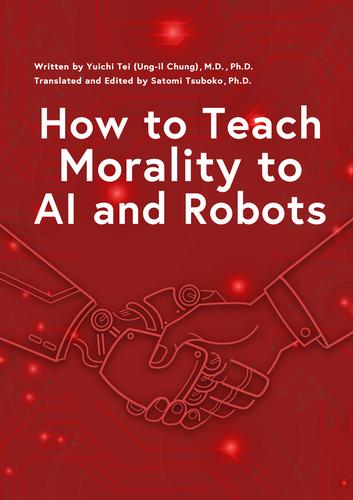How to Teach Morality to AI and Robots(東大教授が挑むAIに「善悪の判断」を教える方法 「人を殺してはいけない」は“いつも正しい”か? 英語版)

作品概要
With rapid advancement in development of artificial intelligences (AIs) and robots in the current world, some people predict that a society where robots and human beings coexist is approaching in the near future. However, I simply wonder if we could actually get along with robots in this world, where we cannot accept diversity even among the same human beings. If we had robots in this deeply divided world, would not it merely end up causing even greater chaos?
I recently started researching on morality engine to control behavior of robots. Simply put, I study how to make robots distinguish good and evil by themselves for the upcoming future when robots and human beings coexist.
The concept of morality for robots is not anything new. Back in 1940s, for example, an American science fiction writer Isaac Asimov started introducing his famous Three Laws of Robotics in his novels.
The Three Laws are very well known, and some people even treat them like golden rules for robots to observe. However, to me, these Laws seem to hold significant problems and therefore to be unsuitable for practical purposes. As you read this book, you will be able to figure out the fundamental defect in the Laws.
In order to study the moral engine with which to regulate robots, we need to first describe the moral framework of human beings. We can make possible such an attempt to model an abstract concept, by using an engineering way of thinking as a tool. In this book, I would like to think about this framework together with you, using as simple and easy words as possible.
If we can model human morality, we will be able to install it onto brains of robots. If we can build a moral system that robots and human beings – mutually different existences – can share, it will in turn help us to overcome divisions resulting from differences in standpoints among human beings, and to further develop an inclusive and diverse society. Using such a new moral system, I would like to establish alternative principles to Asimov’s Three Laws of Robotics and to think about the possibility of a society where human beings and robots coexist. Morality and robots may seem to have nothing in common — but by looking at the point where these two areas actually cross, we will be able to see principles of a future society that we human beings should aim at.
Throughout this intensive seminar, we are going to freely and widely develop our arguments. I plan to also provide you with a summary and practice exercises at the end of each session to help deepen your understanding. Let us make ourselves ready for thinking outside the box, digging deep into our imagination.
Contents
Introduction
Session 1. Is the “You Shall Not Kill” Rule Universal?
Session 2. Classifying Prior Moral Thoughts
Session 3. You Shall Not Kill… Whom?
Session 4. Modeling the Basic Principle of Morality
Session 5. Classifying Hierarchy of Morality
Session 6. Installing Morality onto Robots
Afterword
Hints for Practice Exercises
References



作品レビュー(関連商品を含む)
この作品にはまだレビューがありません。 今後読まれる方のために感想を共有してもらえませんか?



 ポイント
ポイント


